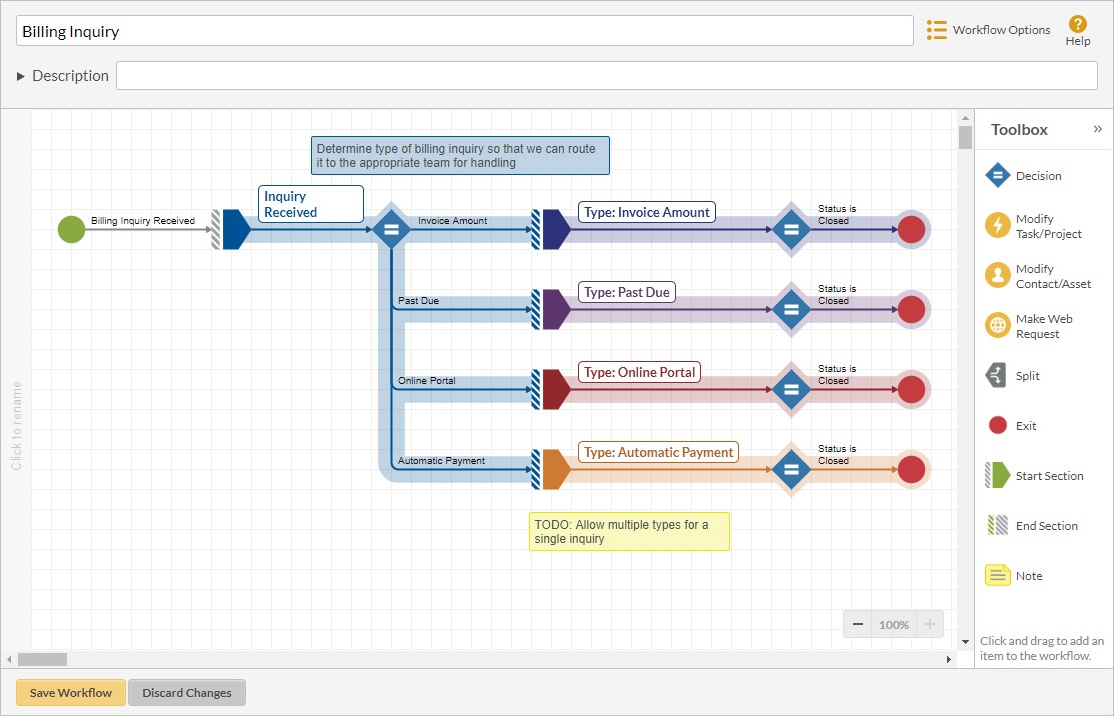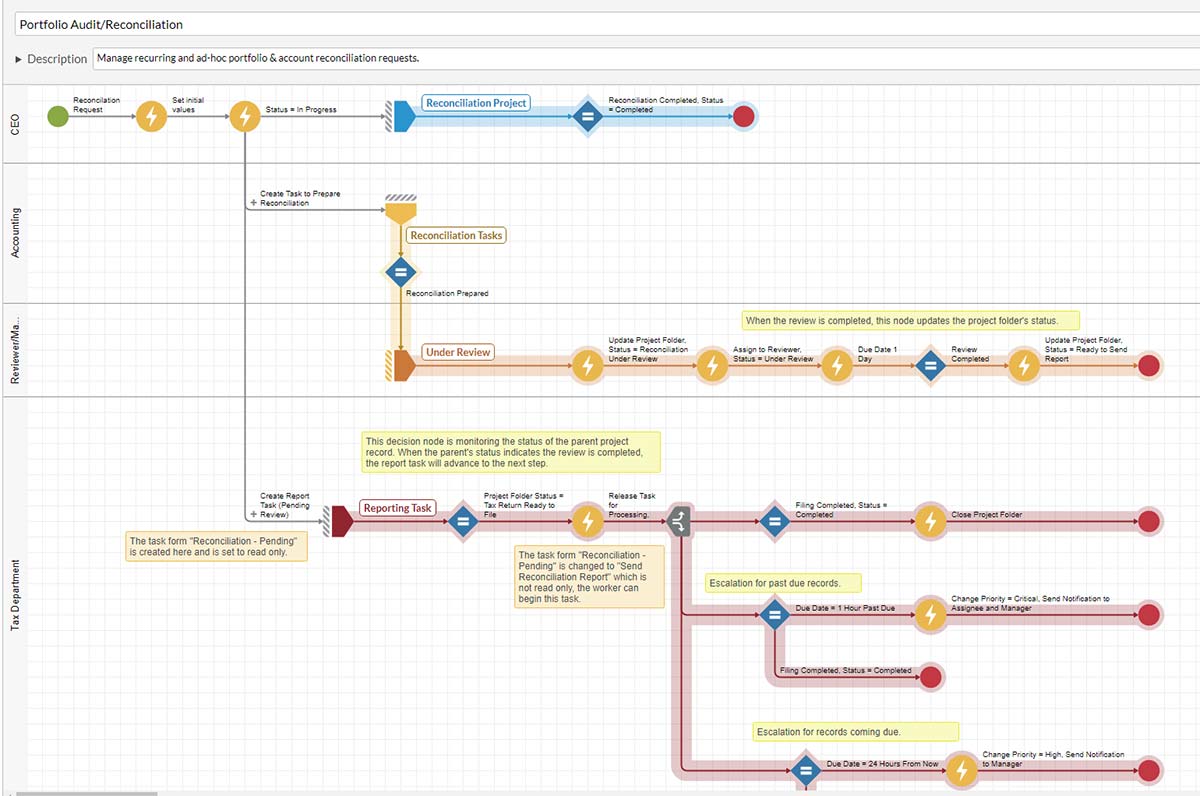Six Sigma implementations have helped save many business’ time and money overall, but as the process ages its benefit is reduced. Beyond initial implementation, process development in Six Sigma frequently takes more time than it is worth. The average amount of time to see Six Sigma changes have an actual effect on your organization is at least 4 months, according to Dushyant Thatte, and many have claimed higher lengths than that (Thatte agrees that the majority of the benefits don’t materialize until closer to 8-12 months later).
Surely, there is a better way?
Keith Stagner and Geoff Tennant wrote on what they call ‘Agile Lean-Sigma‘, a system of using a Lean Sigma tool along with a BPM system, used in conjunction to quickly gather key process information, apply Lean principles to remove waste and then to automate the process. They found that the implementation time of Six Sigma systems was much longer, particular with “long-winded DMAIC projects,” and with the same or less value provided than their Lean BPM counterparts.
Partnering Agile with BPM led to a a 4-week turnaround for process improvement and automation, with a demonstration of process improvement being delivered within days (something HighGear is eminently well-suited to performing).
Stagner and Tennant said this of Lean Six Sigma:
“Lean Six Sigma, on its own, often looks to remove some but not all of the non-value-add work, and does not always make any impact on the business value-add or required work.”
Using their Agile Lean-BPM approach, the focus is firmly placed upon removing the no-value-added work while leaving the work of process management to the BPM tool itself.
The question becomes, where can you find a Lean BPM tool that is fast and responsiveness enough to keep up with Agile?
Ease of Optimization with Lean BPM
Lean BPM is an approach which seeks to eliminate waste in the deployment of a BPMS, and more importantly, seeks to eliminate the waste associated with operating the platform.
HighGear’s approach has been to remove the need for coding and development work, and placing BPM functionality directly into the hands of the Citizen Developer, i.e. the business user or decision maker.
The best person to identify mistakes, issues and errors AND execute process changes are the designers, managers and operators of a business process. It follows that these are the same people who should be able to execute change, but heretofore, coding and dev skills have been needed, even with so-called Low Code BPMS. Lean BPM does not require coding skills, and the platform can be used by the same people who work on the process and need to change it.
Lean BPM tools allow for exactly this: a simple way to model an entire process without the direct need for coding, and where changes can be pushed into a live operational state with a few mouse clicks.
HighGear is a No Code workflow application platform
Visual Workflow System
The obvious benefit of modeling a process is that a more accurate depiction of what it actually is emerges, however, keeping the elements of the workflow outside of the code means that anyone (with access and permission to do so) can easily edit the process in an instant. This allows for a more open Agile work environment where changes are made as the businesses requires it, not when a programmer gets to it.

Lean BPM’s Benefits
The integration of Lean BPM with your business will generally provide four key benefits over Lean and Traditional Six Sigma implementations:
- Speed: You can quickly/easily implement a new process.
- Agility: Lean BPM systems can help your business adapt to change.
- Process Enforcement: You can keep employees on track by enforcing preset business rules and procedures
- Compliance: Record and archive every keystroke within the platform, including multiple version archiving of documents and artifacts managed by the Lean BPMS
- Advanced Automated Reporting/BI: One-click audit reporting functionality allows snapshots of the state of compliance to be provided, either on a recurring, scheduled basis, or as an ad hoc requirements, e.g. a snap inspection.
One beneficial feature of HighGear’s Visual Workflow Designer is its built-in documentation handling, which asks process designers to caption each action or decision point as they go.
Along with swim lanes to allow you to group related actions together, HighGear makes specific processes easy to find and dig into, even when they scale in size and complexity:

An additional feature of HighGear as a Lean BPM platform is that without any additional work or integration, your business will have access to audit data, reports and metrics. Stakeholders and managers have complete control over the process, and because everything is automated and driven down workflow paths using preset business rules, every action is always performed to the same standard with full visibility and accountability.
Advantages of Agile
Users of Agile know that taking small, individually valuable steps generally lead to a better end goal. Agile accelerates delivery because you aren’t left testing everything at the end. This is one of the most common sources of errors with automated systems: doing everything at once except shunting testing to the very end and only sampling part of the system instead of all of it. Developing a business process model with Agile helps to effectively eliminate that type of error.
The ease of implementation displayed by Lean BPM systems allows for businesses to begin with little or no processes modeled. Using emergent process design, the As-Is state is replicated within the platform, and this then forms the starting point for making process changes and revert if the change does not generate the appropriate result. This disassociation of the process and the underlying system allow for the Administrators to make changes they see fit without impacting the IT department.
Using Agile we can effectively prioritize:
- People and interaction over tools and methodology
- Business/customer collaboration over contracts and negotiation
- Working solutions over detailed documentation
- Responding to change over adherence to a plan
This means that by using Agile, practitioners can manage and deploy BPM more efficiently, rapidly getting to ROI and value. This is not to say that the tools, methodology, planning or charters of Six Sigma are wrong, rather we believe we have developed a BPMS which will allow Agile, Lean and BPM to be brought together as Stagner & Tennant outline.
